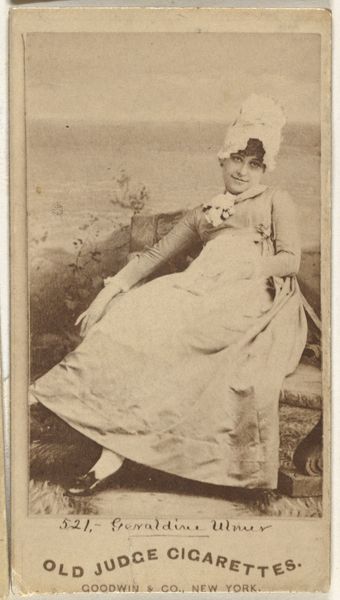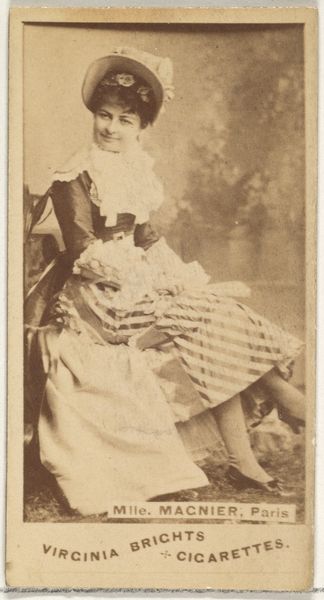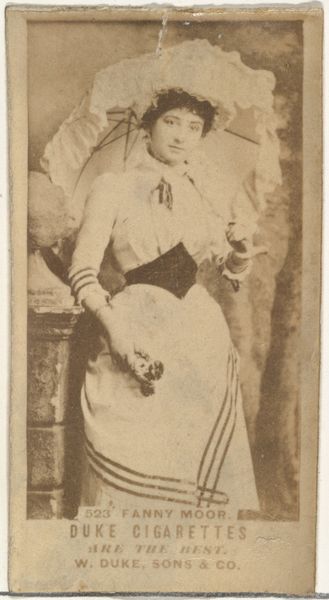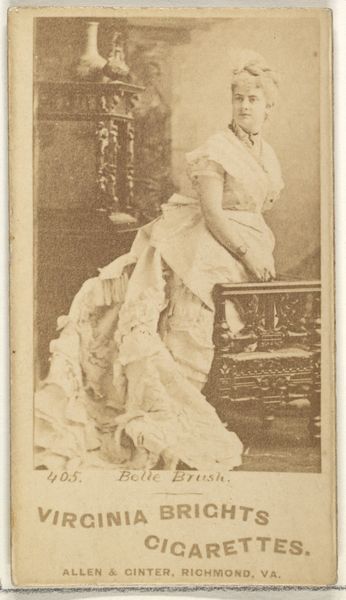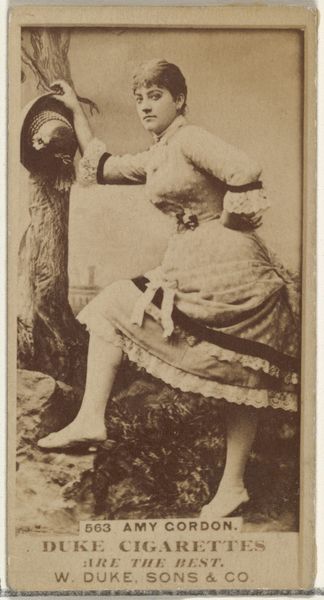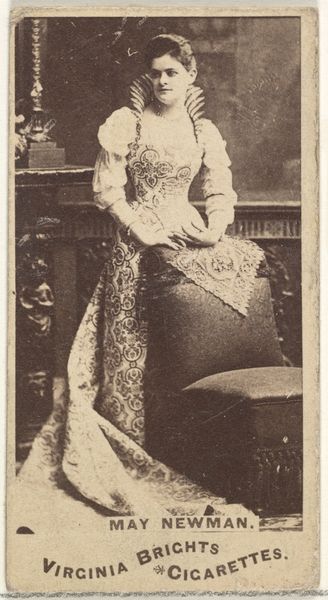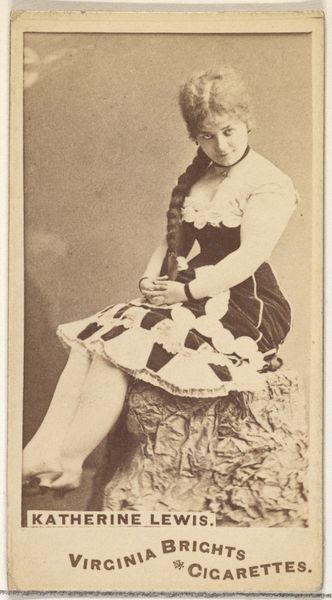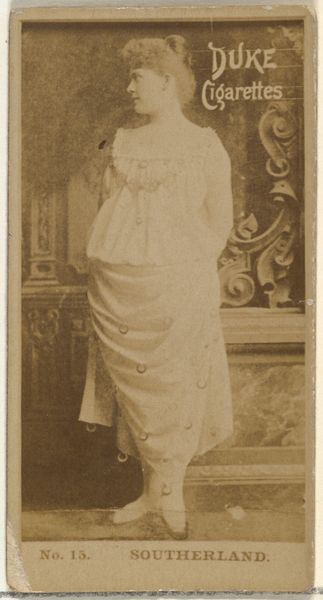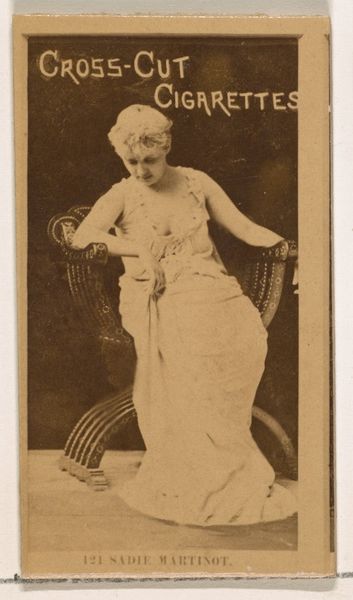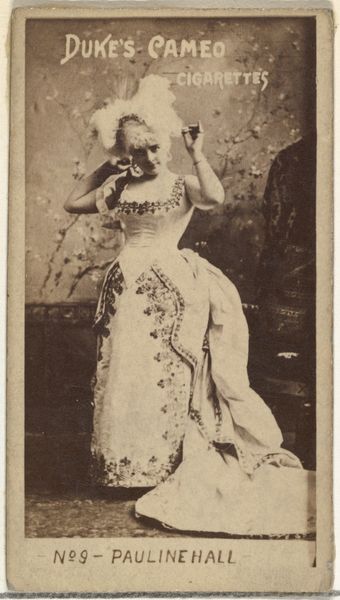
Card Number 312, Mlle. Le Celaur, from the Actors and Actresses series (N145-5) issued by Duke Sons & Co. to promote Cameo Cigarettes 1880s
0:00
0:00
drawing, print, photography
#
portrait
#
drawing
# print
#
impressionism
#
photography
Dimensions: Sheet: 2 11/16 × 1 3/8 in. (6.8 × 3.5 cm)
Copyright: Public Domain
Curator: At The Metropolitan Museum of Art, we have a trade card dating back to the 1880s, originally issued by W. Duke, Sons & Co. to promote Cameo Cigarettes. It's part of the "Actors and Actresses" series and this one is titled "Card Number 312, Mlle. Le Celaur." Editor: My immediate reaction is that there's a strange tension between the delicate impressionistic style of the rendering of Mlle. Le Celaur, and the banal cigarette advertisement stamped at the bottom. It’s as if two distinct realities collide here. Curator: Absolutely. The contrast tells us so much about the values of that period—commodifying beauty and talent so blatantly. Images of actresses were essentially symbols of aspiration and sophistication. Their widespread distribution democratized access to that symbolism, even while reinforcing social hierarchies. Editor: Precisely! Structurally, observe the strategic use of lace—layer upon layer, visually implying depth and richness. Semiotically, these details equate to bourgeois aspirations cleverly deployed to elevate the cigarette brand through association. Curator: And I see, in her slightly averted gaze, the archetypal coquette. She’s aware of being seen but retains a level of detachment. The pose is iconic – the ‘courtesan’ foot elegantly positioned, suggesting refinement while subtly hinting at accessibility. Her image becomes a collective fantasy, packaged and sold. Editor: Note also the photographer’s use of soft focus and subdued sepia tones. The textures seem intentionally blurred, almost dissolving into one another. This effect mimics impressionistic paintings and romanticizes her form in this era before sharp photography. Curator: Yes, it's less about precise likeness and more about evoking a feeling—a sense of idealized beauty, or perhaps a yearning for a different lifestyle for people purchasing what's considered the "best cigarette". Editor: It's a study in contrasts, visually and conceptually, leaving us with the impression of beauty meticulously manufactured for consumption. Curator: Leaving us to question what those historical echoes say to a modern audience viewing those very techniques and symbolic structures being redeployed every single day.
Comments
No comments
Be the first to comment and join the conversation on the ultimate creative platform.
